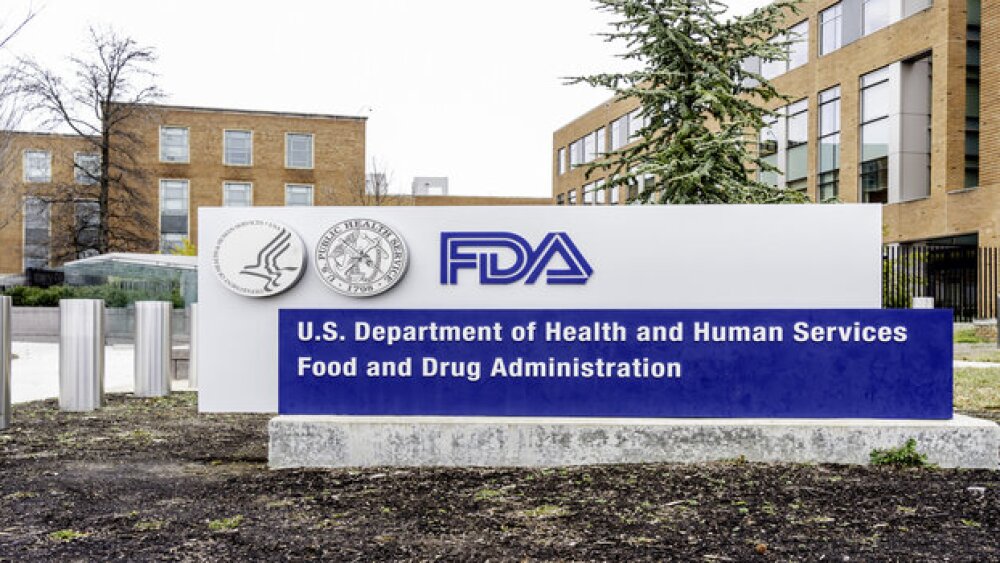RICHMOND, Va., Sept. 25, 2012 /PRNewswire/ Reckitt Benckiser Pharmaceuticals Inc. issued a Citizen Petition today to request the U.S. Food and Drug Administration (FDA) to require all manufacturers of buprenorphine-containing products for the treatment of opioid dependence to implement national public health safeguards involving pediatric exposure educational campaigns and child resistant, unit-dosed packaging to reduce the risk of pediatric exposure.
The company has had in place an extensive risk management program since 2003 designed to minimize the misuse, abuse and unintentional pediatric exposure with buprenorphine products. A new analysis received by Reckitt Benckiser Pharmaceuticals on September 15, 2012 based on data from U.S. Poison Control Centers found consistently and significantly higherrates of accidental pediatric exposure with Suboxone Tablets than seen with Suboxone Film (buprenorphine and naloxone sublingual film [CIII]). The rates for Suboxone Tablets were 7.8 8.5 times greater depending on the study period. This is the first report provided to the company with statistically validated outcomes since a preliminary review in early 2012 that showed a noticeable numerical trend but did not provide enough data points to make a statistical analysis.
Immediately following the review of this data, Reckitt Benckiser Pharmaceuticals proactively notified the U.S. FDA on September 18, 2012 that the company is voluntarily discontinuing the supply of Suboxone Tablets in the United States due to these increasing concerns with pediatric exposure. While the data do not isolate the root cause of these findings, the child resistant, unit-dosed packaging of Suboxone Film may be one of the key contributing factors to the decrease in exposure rates compared to Suboxone Tablets that are distributed in a multi-dose bottle containing 30 tablets, since the active ingredient of both products is the same. Other factors may include Reckitt Benckiser Pharmaceuticals’ community and healthcare professional educational initiatives in addition to the company’s Risk Evaluation and Mitigation Strategy program.
“Based on these findings and the availability of treatment advancements in the United States that have shown reduced pediatric exposure such as Suboxone Film, it is critical for companies to be mandated to have safeguards in place to ensure children are not put at unnecessary risk,” says Richard Simkin, President, Reckitt Benckiser Pharmaceuticals Inc. “We are committed to not only providing evolved treatments for the chronic disease of opioid dependence but protect public health and safety, as evidenced by our decision to discontinue the U.S. supply of Suboxone Tablets. We recognize many patients have relied on Suboxone Tablets to manage opioid dependence over the years and understand there may be concerns about this discontinuation, and we are committed to helping all patients and providers to ensure that managing this serious, chronic disease is not interrupted.”
Reckitt Benckiser Pharmaceuticals will be working with the U.S. FDA and broader healthcare community to ensure patients currently taking Suboxone Tablets are able to appropriately transition to the same active ingredient with Suboxone Film while minimizing any risk to the continuity of their treatment. We anticipate that distribution of Suboxone Tablets in the U.S. will be discontinued within the next six months, possibly sooner depending on discussions with the U.S. FDA.
The different rates of pediatric exposure are not related to the active ingredient found in both Suboxone Tablets and Suboxone Film. The company encourages patients currently taking Suboxone Tablets to continue with their treatment and consult their physician about how to transition to Suboxone Film. Suboxone Film is covered by the majority of insurance plans, Medicare and Medicaid. Additionally, patients can access a co-pay savings program at Suboxone.com or from their physician to offset out-of-pocket costs associated with their medication. Since the U.S. launch of Suboxone in 2003, it is estimated that over three million Americans with opioid dependence have been treated with the active ingredient in Suboxone Tablets and Suboxone Film, buprenorphine and naloxone. Suboxone patients can visit Suboxone.com or call 866-973-HERE (866-973-4373) and prescribers can call 877-SUBOXONE (877-782-6966) for more information.
About Opioid Dependence
Opioid dependence is a chronic medical condition caused in part by the changes in the chemistry of the brain that can result from regular opioid drug use. The World Health Organization and the National Institute on Drug Abuse define opioid dependence as a chronic brain disease that can be fatal if left untreated.
Approximately two million Americans abused or were dependent on prescription opioid painkillers in 2010. In the same year, nearly 400,000 people abused or were dependent on heroin. The Centers for Disease Control and Prevention in November 2011 issued a report that showed prescription opioid painkiller overdose has reached epidemic levels in the United States. Furthermore, taking prescription opioid painkillers without a medical need increased 75 percent from 2002 to 2010. A total of 12 million Americans reported misusing prescription opioid painkillers in 2010. Men and individuals ages 26-49 saw the largest increase in nonmedical use of prescription opioid painkillers, taking the drugs 200 or more days a year.
About Suboxone Film
Suboxone Film was approved by the U.S. FDA on August 30, 2010, and combines buprenorphine and naloxone in a 4:1 ratio of 2 mg/0.5 mg and 8 mg/2 mg dosage formulations, respectively. The 4 mg/1 mg and 12 mg/3 mg dosage formulations approved by the U.S. FDA in August 2012 should be available later this year. Suboxone Film’s main active ingredient is buprenorphine, a partial opioid agonist that strongly binds to the opioid receptors in the brain and blocks other opioids from attaching. Buprenorphine helps reduce opioid use and helps increase retention in treatment by managing withdrawal symptoms and reducing cravings. Suboxone Film also includes naloxone, an opioid antagonist, to help minimize its attractiveness for deliberateparenteral misuse. When Suboxone Film is taken as prescribed, dissolved under the tongue, the naloxone has no effect.
Only physicians certified under the Drug Addiction Treatment Act (DATA) 2000 can prescribe Suboxone. As part of the U.S. FDA requirements to ensure the benefits of treatment with Suboxone Film outweigh potential risks particularly risks of accidental overdose, misuse and abuse, the company has implemented a Risk Evaluation and Mitigation Strategy program as a follow-on to the RiskMap.
Selected Safety Information
Buprenorphine can cause severe, possibly fatal, respiratory depression in children. Advise the patients to store buprenorphine containing medications safely out of the sight and reach of children and to destroy any unused medication appropriately. Pediatric exposure to SUBOXONE in any form or quantity may be dangerous.
SUBOXONE Sublingual Film can be abused in a manner similar to other opioids, legal or illicit. Clinical monitoring appropriate to the patient’s level of stability is essential.
Adverse events commonly observed with the sublingual administration of SUBOXONE Sublingual Film are numb mouth, sore tongue, redness of the mouth, headache, nausea, vomiting, sweating, constipation, signs and symptoms of withdrawal, insomnia, pain, swelling of the limbs, disturbance of attention, palpitations, and blurred vision.
Indication
SUBOXONE® (buprenorphine and naloxone) Sublingual Film (CIII) is indicated for maintenance treatment of opioid dependence as part of a complete treatment plan to include counseling and psychosocial support.
Treatment should be initiated under the direction of physicians qualified under the Drug Addiction Treatment Act.
Important Safety Information
SUBOXONE Sublingual Film should not be used by patients hypersensitive to buprenorphine or naloxone, as serious adverse reactions, including anaphylactic shock, have been reported.
SUBOXONE Sublingual Film can be abused in a manner similar to other opioids, legal or illicit. Clinical monitoring appropriate to the patient’s level of stability is essential.
Chronic use of buprenorphine can cause physical dependence. A sudden or rapid decrease in dose may result in an opioid withdrawal syndrome that is typically milder than seen with full agonists and may be delayed in onset.
SUBOXONE Sublingual Film can cause serious life-threatening respiratory depression and death, particularly when taken by the intravenous (IV) route in combination with benzodiazepines or other central nervous system (CNS) depressants (ie, sedatives, tranquilizers, or alcohol). It is extremely dangerous to self-administer nonprescribed benzodiazepines or other CNS depressants while taking SUBOXONE Sublingual Film. Dose reduction of CNS depressants, SUBOXONE Sublingual Film, or both when both are being taken should be considered.
Liver function should be monitored before and during treatment.
Death has been reported in nontolerant, nondependent individuals, especially in the presence of CNS depressants.
Children who take SUBOXONE Sublingual Film can have severe, possibly fatal, respiratory depression. Emergency medical care is critical. Keep SUBOXONE Sublingual Film out of the sight and reach of children.
Intravenous misuse or taking SUBOXONE Sublingual Film before the effects of full-agonist opioids (eg, heroin, hydrocodone, methadone, morphine, oxycodone) have subsided is highly likely to cause opioid withdrawal symptoms.
Neonatal withdrawal has been reported.
Use of SUBOXONE Sublingual Film in pregnant women or during breast-feeding should only be considered if the potential benefit justifies the potential risk.
Caution should be exercised when driving vehicles or operating hazardous machinery, especially during dose adjustment.
Adverse events commonly observed with the sublingual administration of SUBOXONE Sublingual Film are oral hypoesthesia, glossodynia, oral mucosal erythema, headache, nausea, vomiting, hyperhidrosis, constipation, signs and symptoms of withdrawal, insomnia, pain, and peripheral edema.
Cytolytic hepatitis, jaundice, and allergic reactions, including anaphylactic shock, have been reported.
This is not a complete list of potential adverse events associated with SUBOXONE Sublingual Film. Please see full Prescribing Information for a complete list at www.suboxone.com/pdfs/SuboxonePI.pdf
To report an adverse event associated with taking SUBOXONE Sublingual Film, please call 1-877-782-6966. You are encouraged to report adverse events of prescription drugs to the FDA. Visit www.fda.gov/medwatch or call 1-800-FDA-1088.
About Reckitt Benckiser Pharmaceuticals Inc.
Reckitt Benckiser Pharmaceuticals Inc. is a specialty pharmaceutical company committed to expanding education and access to medical therapies for patients suffering from the chronic, relapsing brain disease of opioid dependence. The company manufactures and markets medications that, in conjunction with counseling and psychosocial support, treat opioid dependence. Reckitt Benckiser Pharmaceuticals Inc. is a wholly owned subsidiary of Reckitt Benckiser Group plc, a global company publicly traded on the UK stock exchange.
SOURCE Reckitt Benckiser Pharmaceuticals Inc.




